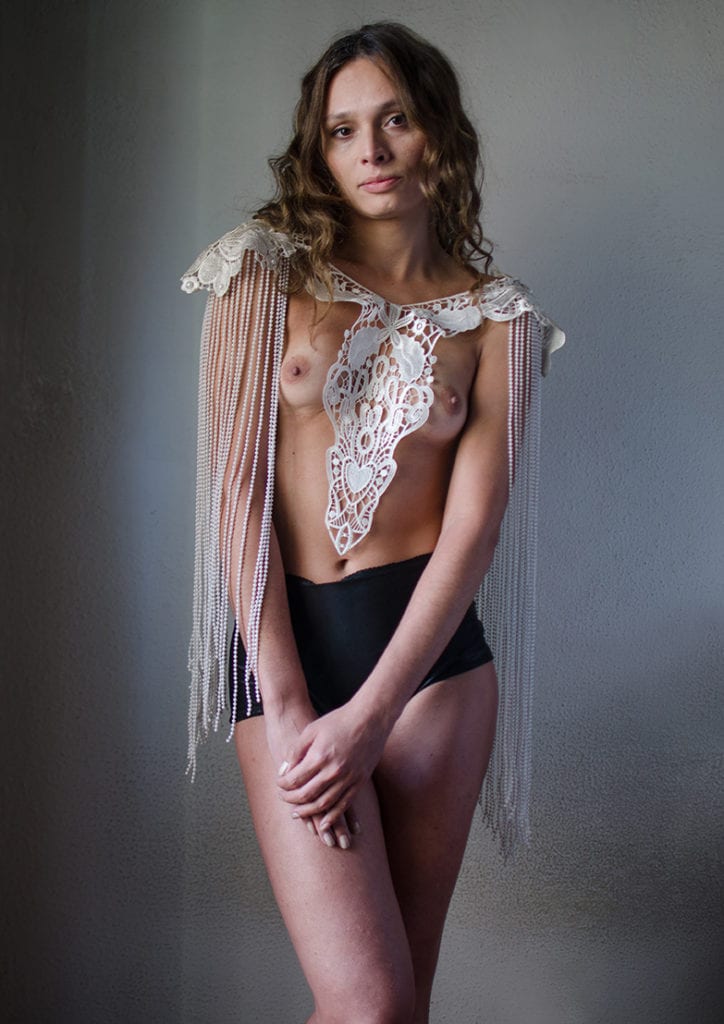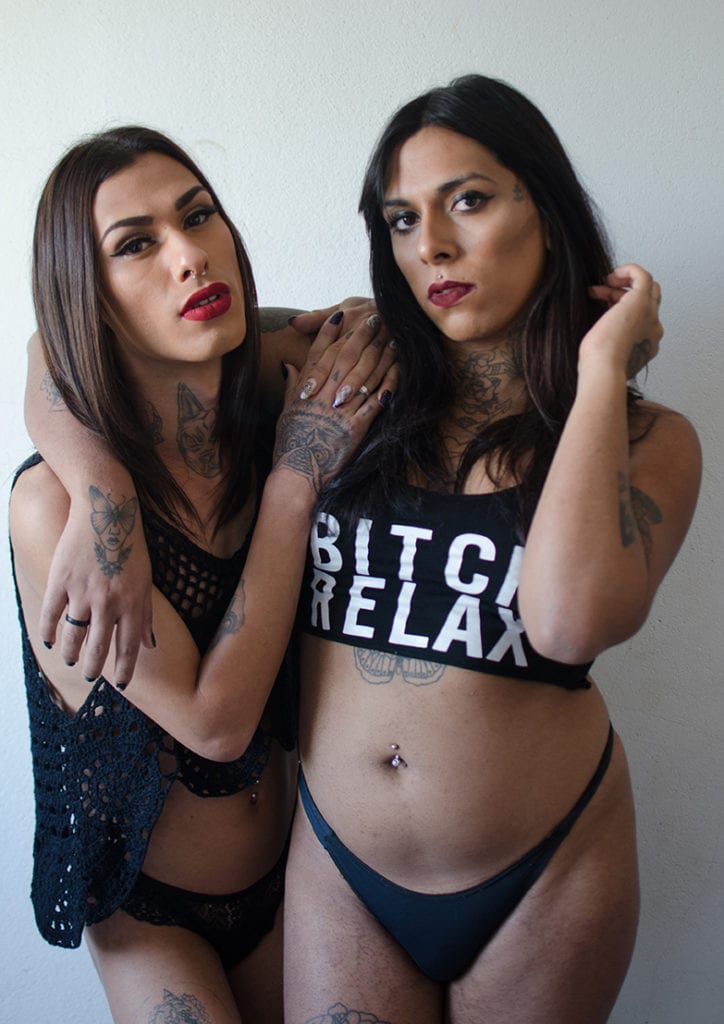The life expectancy of transgender women in Brazil is just 35 years old. They are subject to extensive daily abuse, and around 90% of them work as prostitutes, having been ostracised by family and friends. The country also has the world’s highest murder rates of transgender women; there have been 113 this year alone. With no social visibility, there is very little being done to counteract the epidemic of abuse. Times are changing, thanks to the women leading the fight for their rights, but there is a long way to go. To understand this fractured, but resilient, community, Camila Falcão spent the last eighteen months photographing them in São Paulo.
Falcão’s work seeks to elevate and celebrate her subjects, by presenting them as individuals, and not statistics. Through two projects, Abaixa Que É Tiro and Onika, she has constructed an intimate and timely portrait of the community. Given the environment in which these women exist, the response to the work has defied expectation; Falcão has been invited to give interviews for publications such as Brazilian Marie Claire, Vice and UOL, as well as ZUM, Brazil’s most influential photography magazine. The work has also been selected for several photofestivals, and she has been asked to become a member of Women Photograph, Native Agency and Girlgaze, raising the awareness of São Paulo’s vibrant and defiant transgender community across the globe. This response also speaks volumes as to how photography can cause a lasting, positive effect on people’s consciousness.
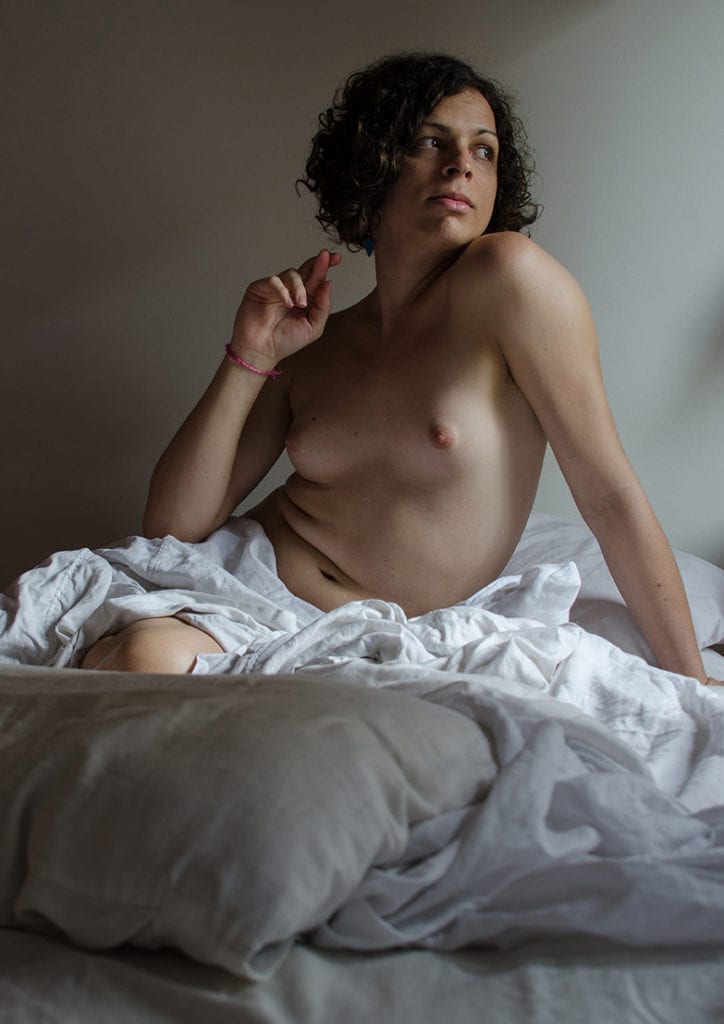
What is life like for the transgender community in Brazil?
As a cisgender woman, I’ll never be able to tell you exactly what it’s like to be transgender in Brazil, because I don’t have that experience. What I can tell you of are the things I’ve heard, seen, and read, having been so close to the community for the last couple of years.
More trans people are killed in Brazil than anywhere else in the world. Brazil is also the country that consumes the most pornography as a population, meaning that our society is particularly troubled when it comes to gender and sexuality. The majority of these women have broken up with their families, and have failed to complete their studies because they have had to work and fight for their survival. Very sadly, as a result, about 90% of them work as prostitutes.
Beyond this, they face enormous difficulties each day, just existing in a transphobic society. Simple activities like going grocery shopping, walking to work or even getting a wax can be humiliating and can cause deep trauma. The degree of social invisibility of trans people in Brazil is actually so great that there is no official data that can aid the issue or lead to the introduction of human rights policies. But there is a whole new generation of Brazilian trans women fighting for their rights, visibility and dignity, and I’m very proud to be their ally.
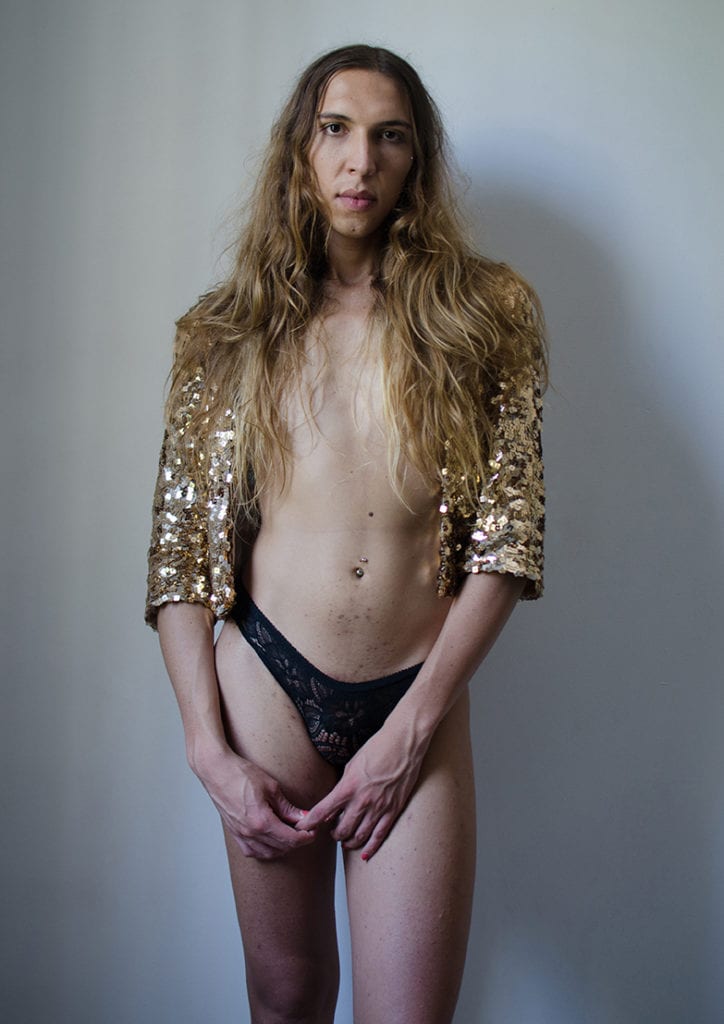
Can you tell me a bit about your project Abaixa Que É Tiro?
I used to be a volunteer at the Centre for Reference in Defense of Diversity in São Paulo, and thanks to this job, I was in constant and direct contact with many transgender women. After some time, I realised the enormous diversity of this community, and each of these individuals.
All their different ways of expressing their femininity enchanted me, and I saw an opportunity to bring this plurality to the surface, to contribute to the deconstruction of stereotypes and, above all, to the construction of a new and more realistic perception of them. I knew it wouldn’t be easy for them to trust me to create such intimate portraits, but I decided to try and get in touch with a few women. They were incredibly receptive and generous. I’ve photographed 45 women so far. My goal is to show the enormous diversity between them, and I want the work to invite people to ask themselves whether simply passing as a woman defines being one.
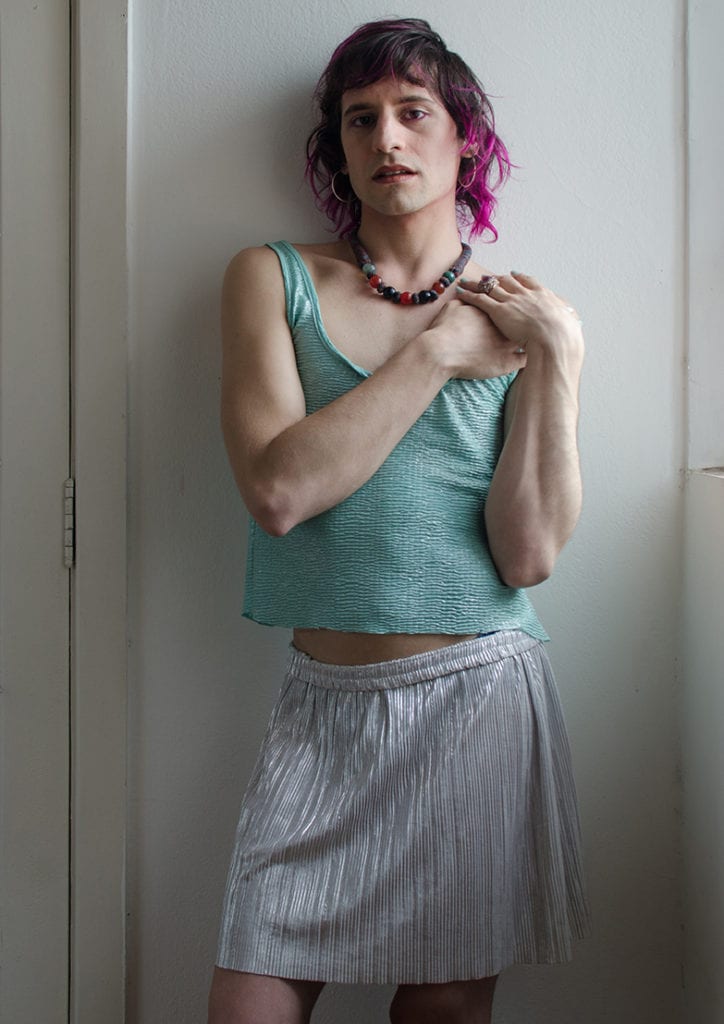
How have people responded to the series, and to your work in general?
When I started this series, I never imagined it would go so far and would touch so many people. I’ve been doing it for about 18 months now and I’m still surprised by how well people are taking it, considering that we live in the most transphobic society in the world. I’ve received messages from many trans women saying how important it was for them to see other trans women being portrayed in such beautiful way, and how amazing it was to feel represented with dignity and respect, which is the best feedback I could ever get.
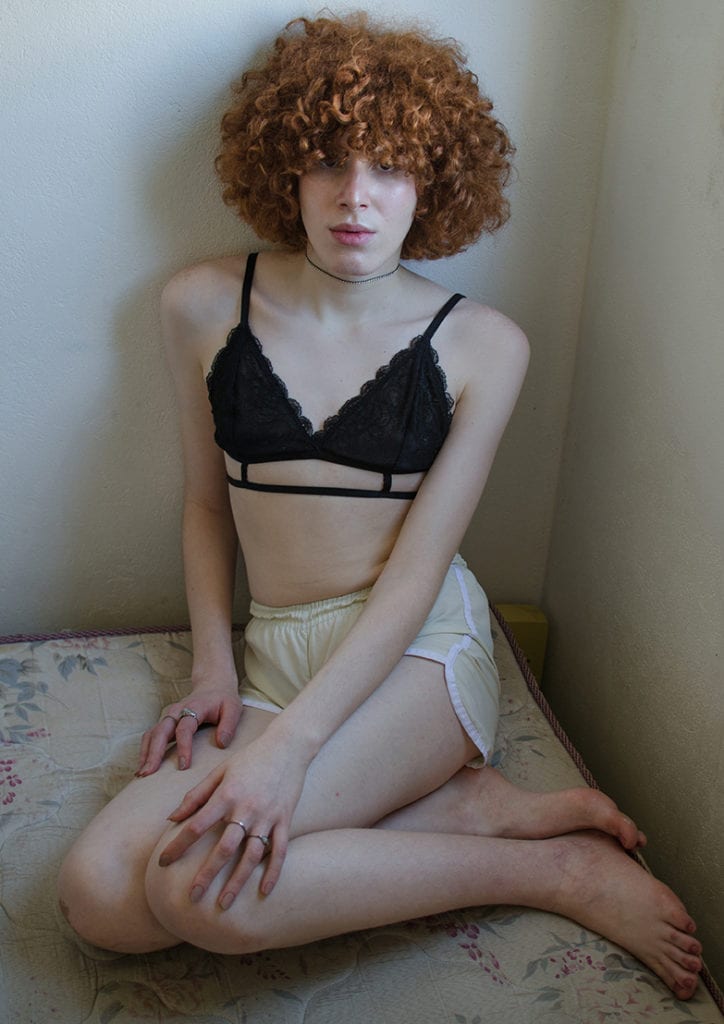
With your other ongoing project, Onika, you have spent a lot of time documenting a single subject. What are the challenges of working so intimately with someone?
Onika is very special. I’ve also been shooting her for 18 months, and she amazes me every time we meet, with her beauty and the way she carries herself, but her transgressive ideas are what gets me the most. I try to let her be portrayed the way she decides; sometimes I suggest something when I want to show or emphasize an aspect of her body or a certain mood, but I think it’s important to let her be as free and as comfortable as possible. I want to show how she deals with transitioning, her relationship with her body and her physical changes. So far, I haven’t faced many challenges to be honest, but I think the real challenge will come when we decide to stop shooting and start thinking about editing the book.
What’s next for you?
I’m starting a project about Munira, an 80 year old woman I met at the pool near my house many years ago. We became acquaintances last year when I finally had the courage to tell her how much I loved her sense of style. For a few weeks after we first started talking, I told her I wanted to shoot her, focusing on her wardrobe and style. At the beginning, she was a little apprehensive, but a year and a lot of coffees later, she has agreed to do it.
Do you want to be part of the movement? Together, we will create a Portrait of Humanity
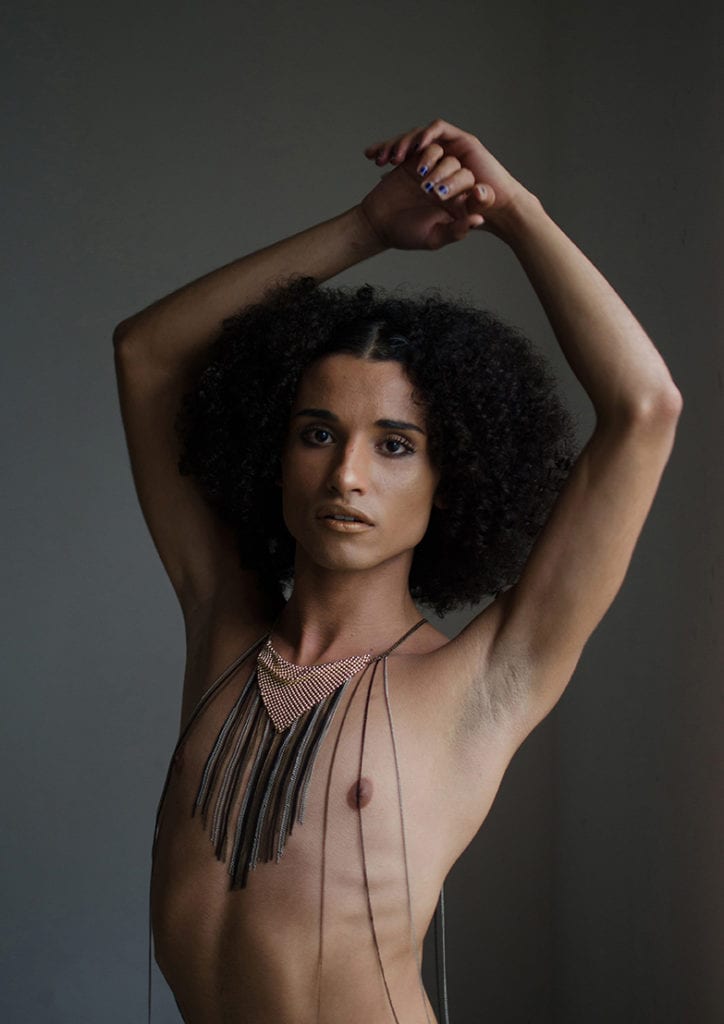 Terra Lux © Camila Falcão, Abaixa Que É Tiro
Terra Lux © Camila Falcão, Abaixa Que É Tiro
